2016 Nissan Maxima SR

| The Good: – Head-turning styling – Cabin trim and features – Power and handling |
The Bad: – Firm ride in SR model – Steering feedback – That whole CVT issue |
Nissan is a carmaker of many faces, building everything from Sunnys to Patrols with a few legendary sports cars in between. Back in the 90s, they created waves among enthusiasts with cars like the Skyline GT-R, the 300ZX, the Silvia and, for those living in Middle East countries which did not get any of those cars, the Nissan Maxima. Tagged as the “4-Door Sports Car” since its inception in the 1980s, the Maxima peaked in the early 2000s and then stagnated for several years, simply becoming a higher-trim version of the Altima while shamelessly still coming with “4DSC” badges as standard. But the new one for 2016 is ground-breaking in terms of design. And we were itching to see if its performance can match its new look.
The car is indeed a bit of a head-turner, especially in top-spec SR form, with a nice shape, big 19-inch alloys and futuristic detailing up front and around the rear pillars. The designers have hid the car’s height and long overhangs well. It’s a midsizer, although Nissan will try to convince you it competes with full-size sedans.

Mind you, it’s not really a full-sizer even though it looks like one. Sharing its wheelbase with the Nissan Altima, the Maxima is actually a bit longer and wider, but lower. As such, the cabin space is about that of an Altima, which is to say it’s pretty decent, and maybe even with a bit more rear headroom thanks to its extended roofline. It arguably feels just as spacious as real full-sizers such as the Chevy Impala, despite what the specs say. The boot is also very big, while split-folding seats help to expand that space even further. There’s no shortage of cup-holders, door pockets and cubbies either.
Where the Maxima truly shines is in the choice of cabin materials, with stitched leatherette everywhere on the upper dash and doors to match the seats. You really get your money’s worth here.
There’s also a new infotainment capacitive touchscreen with large clear icons, navigation, Bluetooth phone, good stereo and the optional around-view parking camera system. Other tech features in our top-spec tester includes power-adjustable heated/cooled front seats, smart key with starter button, HID headlights with LED running lamps and tail lights, great dual-zone auto a/c with rear vents, panoramic glass roof, adaptive cruise control with auto-braking, blind-spot monitors and a full set of airbags.

The Maxima’s 3.5-litre V6 now makes 300 hp at 6400 rpm and 353 Nm of torque at 4400 rpm, and you can feel all of it, even with the CVT automatic. What they’ve done is retune the CVT to be more aggressive on initial throttle tip-in, rather than behaving like a rubber-band as the old version did, so the car feels faster and more responsive on overtaking and such, much more so than the old 290 hp model overall. And we burned petrol at a respectable rate of 13.5 litres/100 km. So even if you hate CVTs, it’s not bad to drive this one daily. They even give you paddle-shifters to shift imaginary gears with simulated gear-changes, but leaving it in “normal” is still the quickest way to accelerate, as we did 0-100 kph in 6.8 seconds during our January test.
The good news is that the new Maxima handles better than ever. On long curves at least, it felt stable and pretty much flat at somewhat-high speeds. The limits of this front-wheel-drive sedan are high enough that understeer will not rear its ugly head most of the time. We have to mention though, that our test car was the SR version, which apparently comes with “sport-tuned” suspension, aside from the larger 19-inch wheels with low-profile 245/40 tyres.
The steering is a bit odd, feeling rather heavy at parking speeds but lightening up at highway speeds, when it should be the other way round. It firms up enough in “sport” mode though, although it doesn’t add any further feedback. The brakes work well, backed up by ABS, ESP and all that, but they rarely need to intervene since the car’s limits are fairly high.
The ride is a bit stiff on this SR model, so it’s not silky-smooth on the highway, but is generally compliant enough for daily driving. We suspect the lower-spec models with smaller 18-inch wheels will ride a bit more comfortably. There is no obvious wind noise, but moderate road noise creeps in at higher speeds. And the engine is generally muted for the most part, audible only on full throttle.
So is the “Four-Door Sports Car” back? With front-wheel-drive and a CVT automatic, there’s only so much you can do. But Nissan has done a whole lot more than we expected, to the point that FWD and CVT don’t really feel like drawbacks, but more like just a different take on the sports-sedan scene. Sure, those looking for a “purer” driving experience will have to look elsewhere, maybe even at sister-brand Infiniti, but the Maxima is what it is — a premium sporty sedan with all the luxury bells and whistles of an Infiniti.
| Price Range: Dh 110,000-145,000 Current Model Introduced in: Body Styles: Engines: Transmissions: Setup: Suspension: |
Brakes: Front: discs Rear: discs Curb Weight: Length: Wheelbase: Top Speed: Test Acceleration 0-100 kph: Observed Test Fuel Economy: |
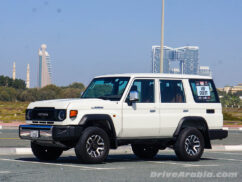
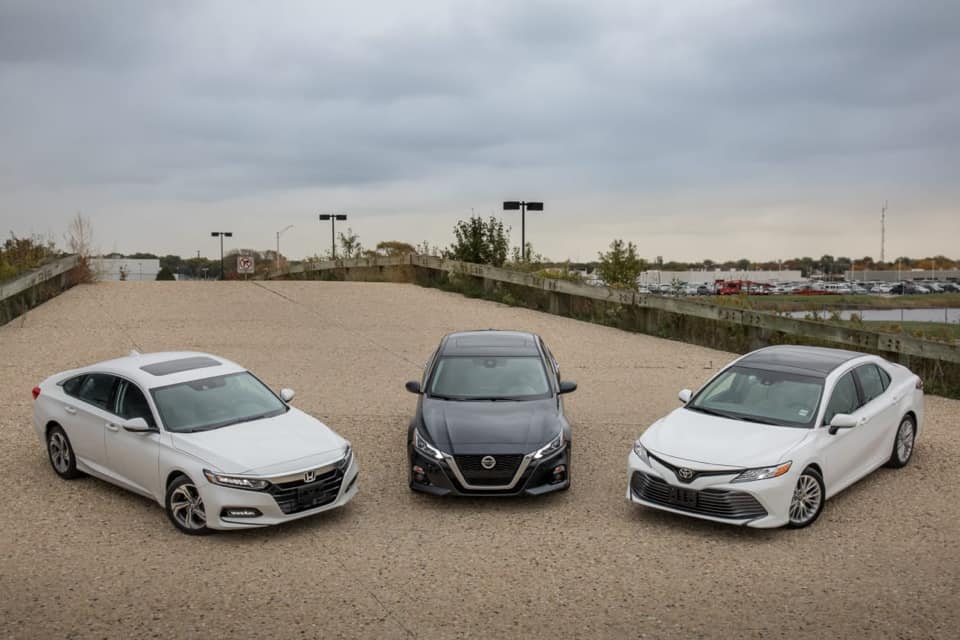
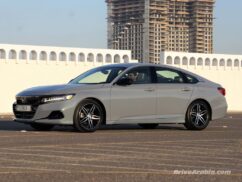
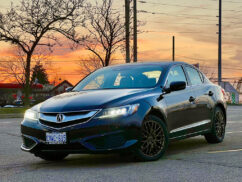
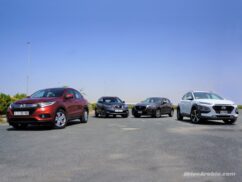
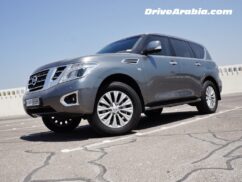

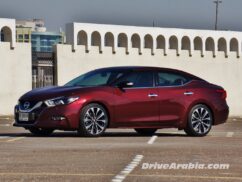






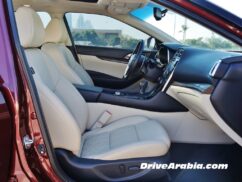
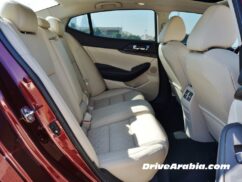
Comments
S3_S@V@GE
Interior is top-notch !!! Well done Nissan.